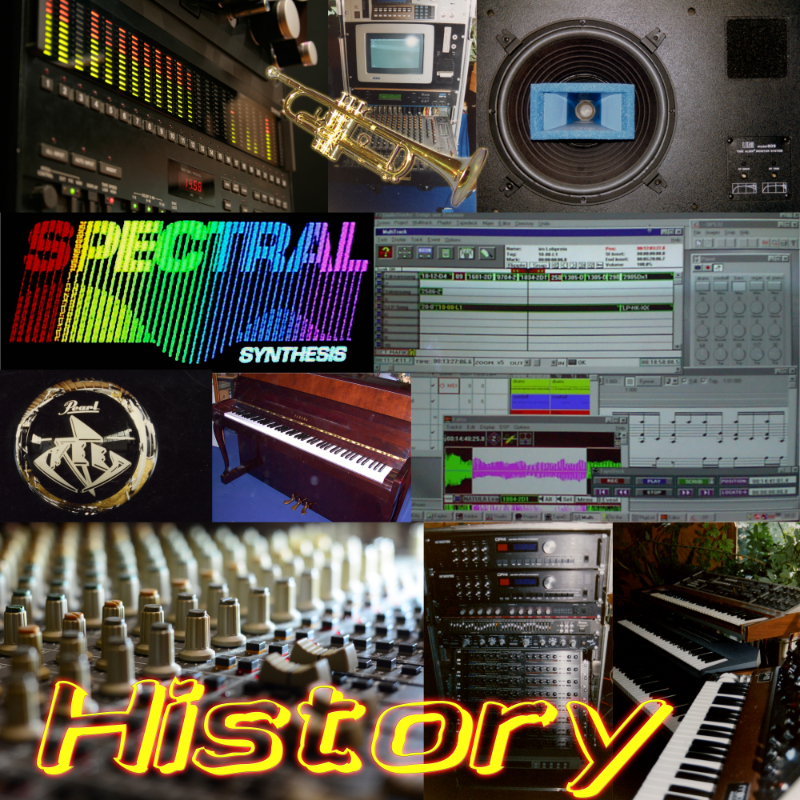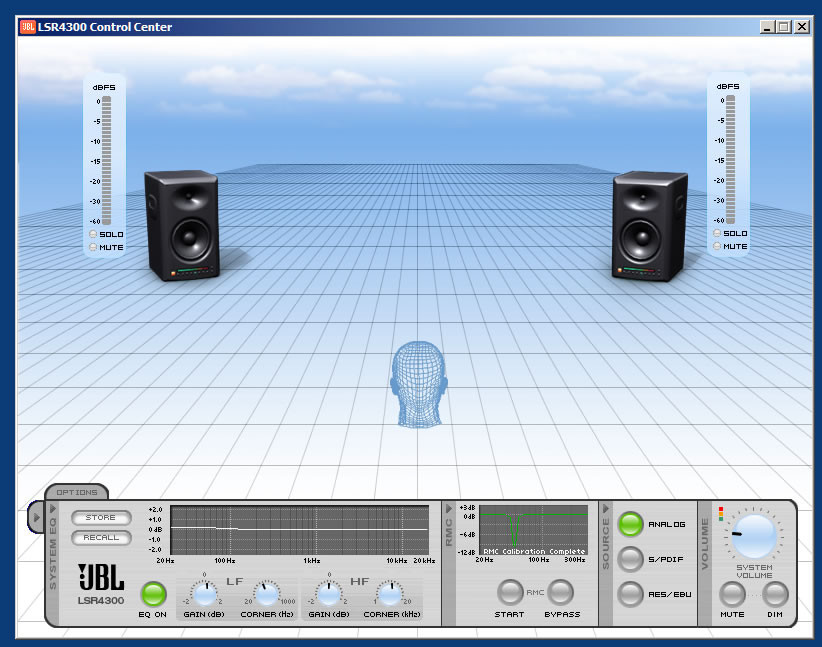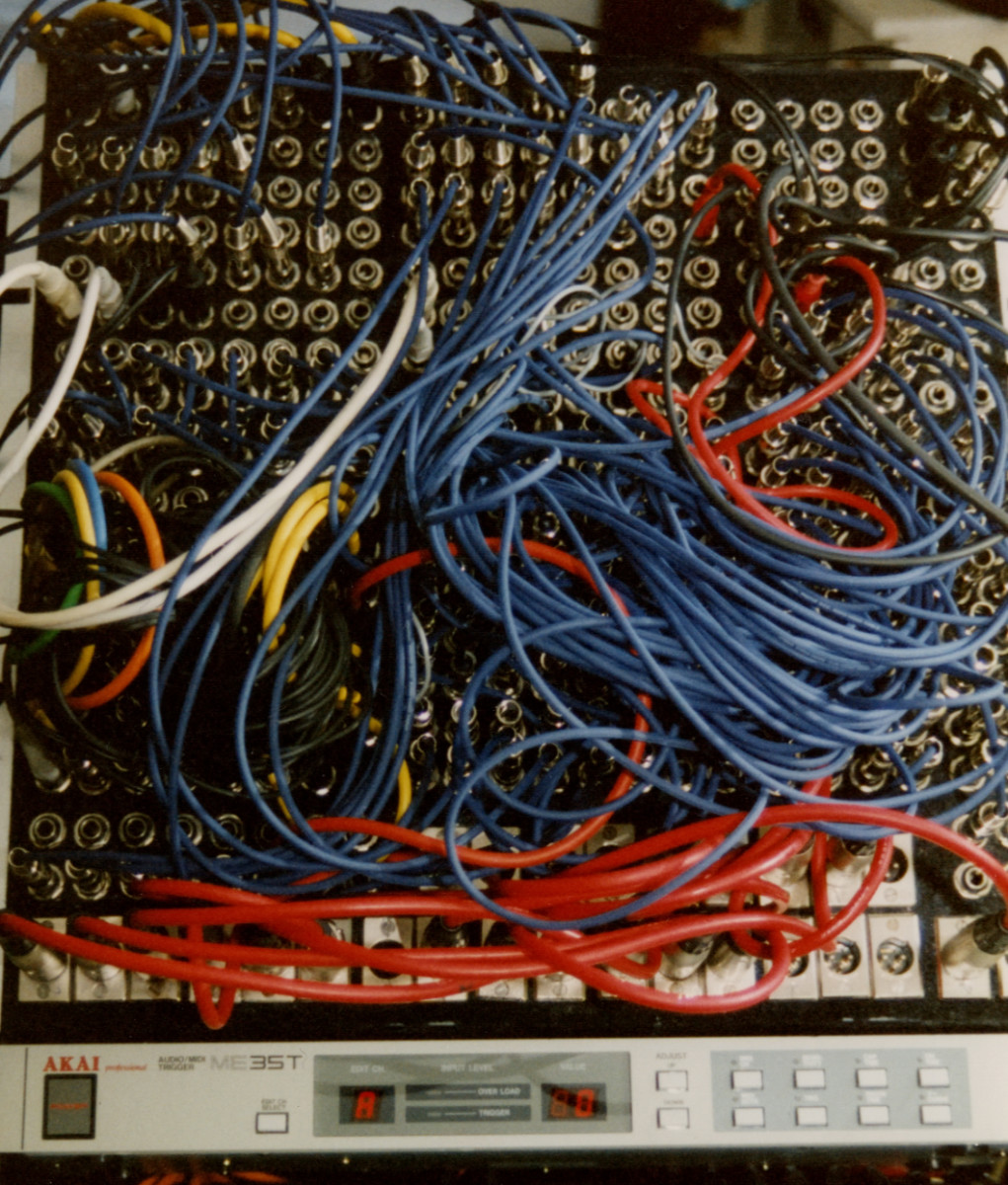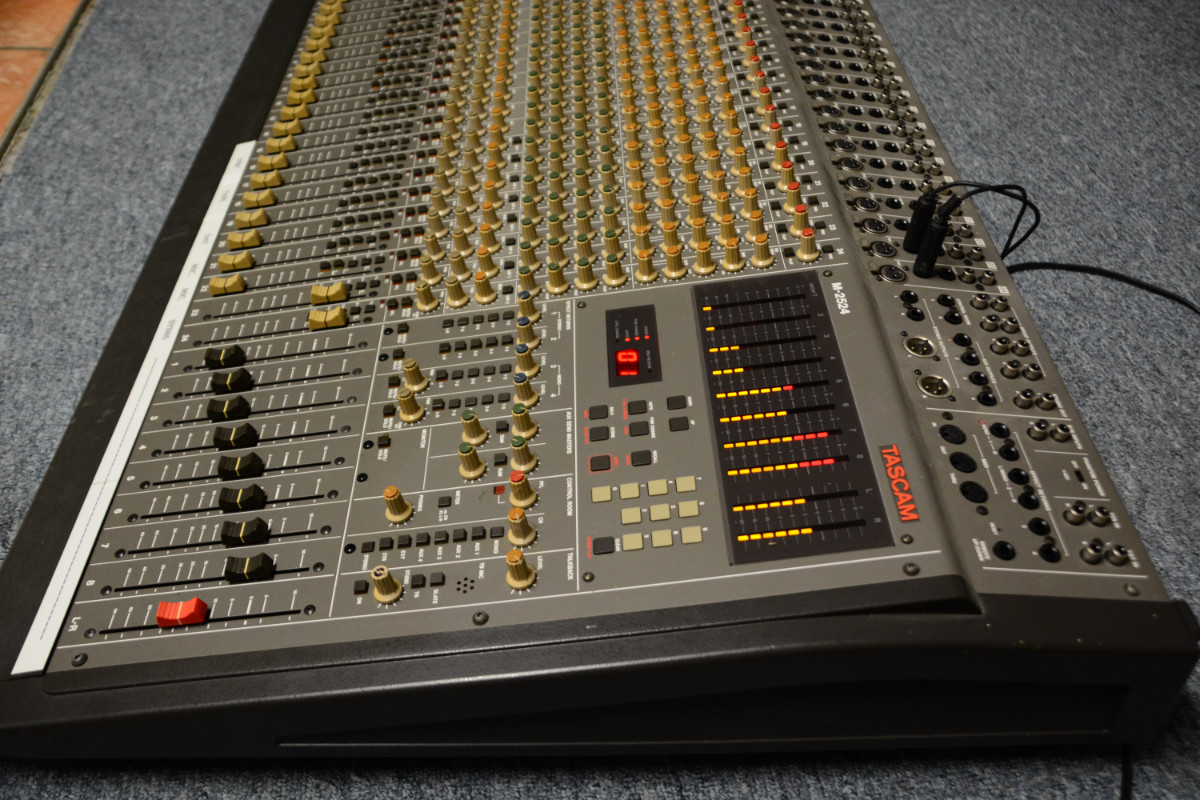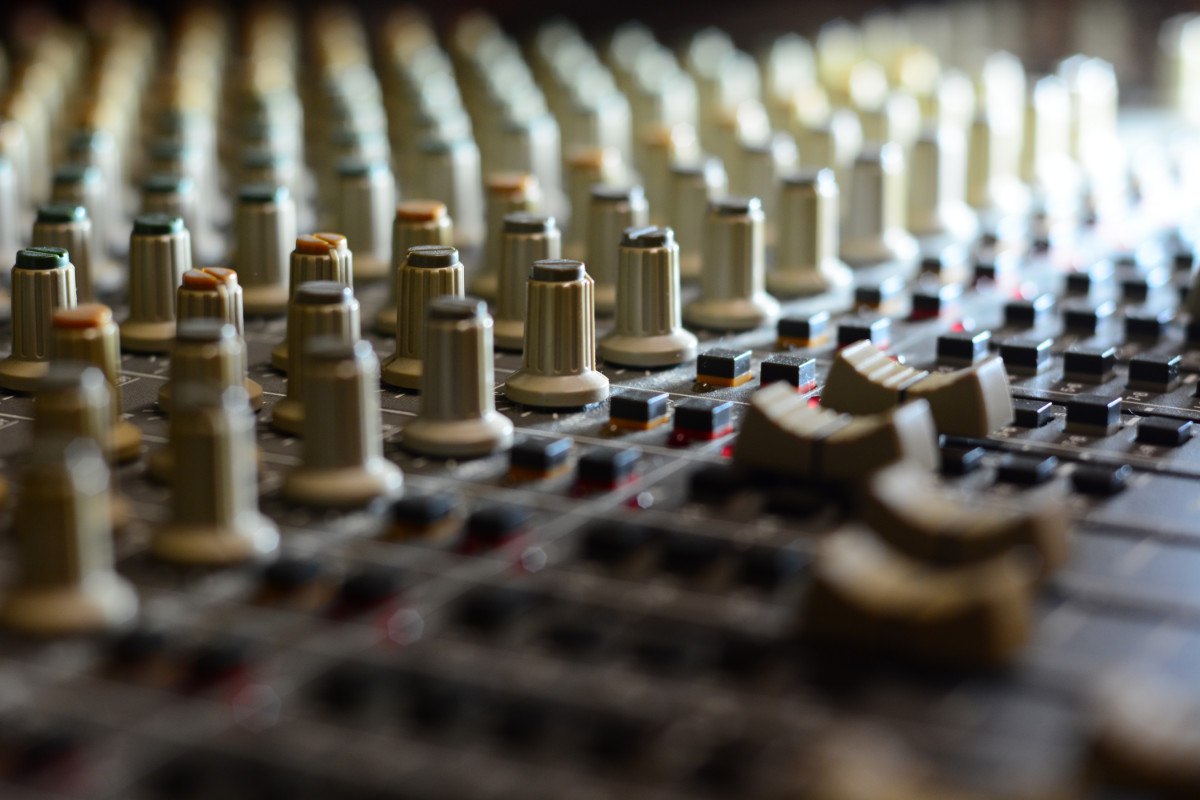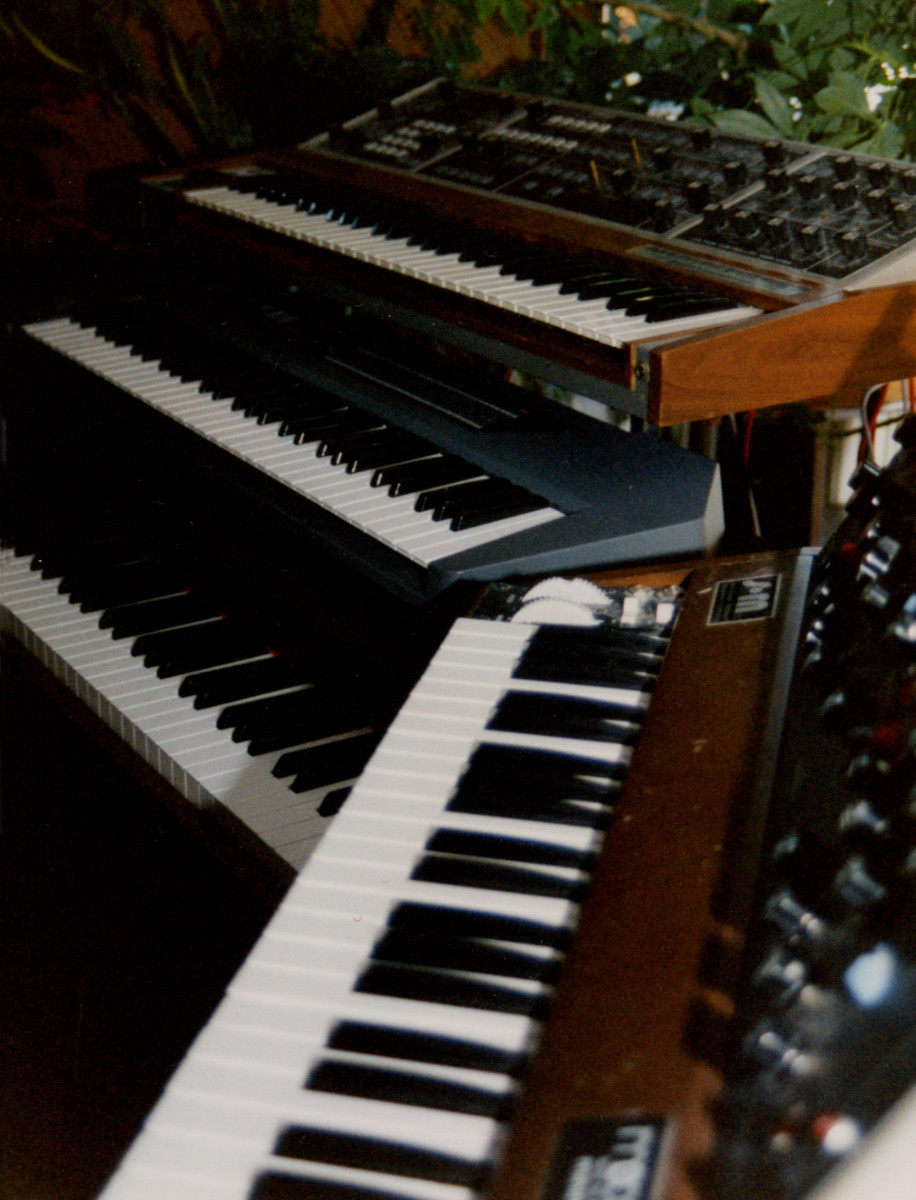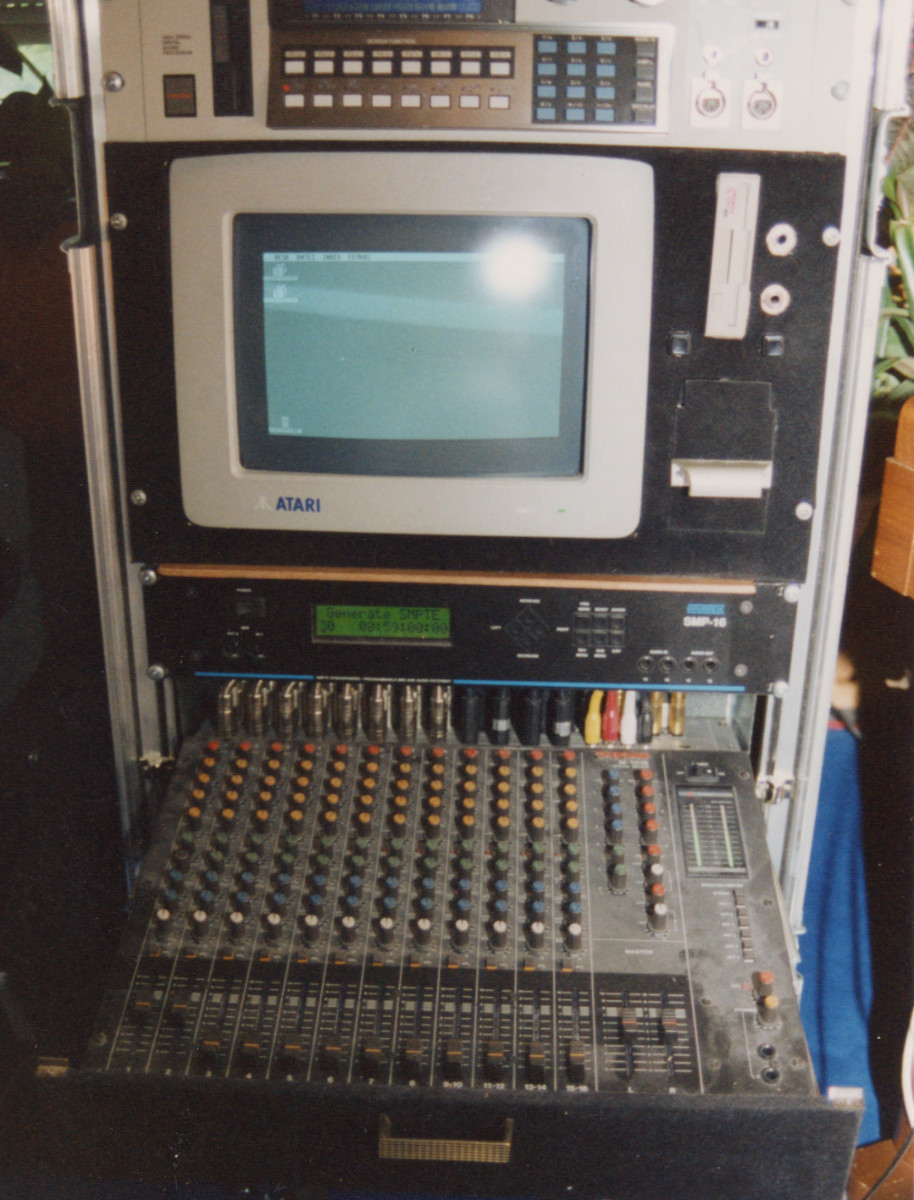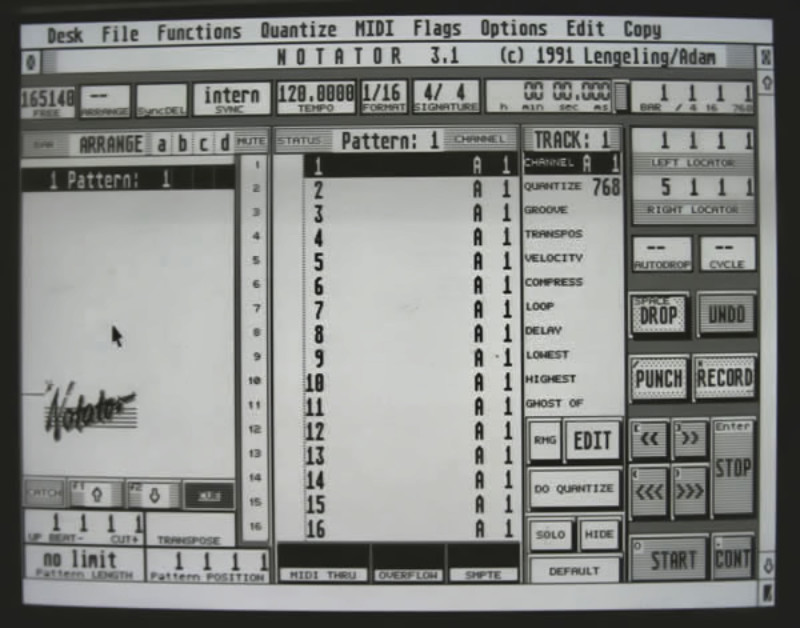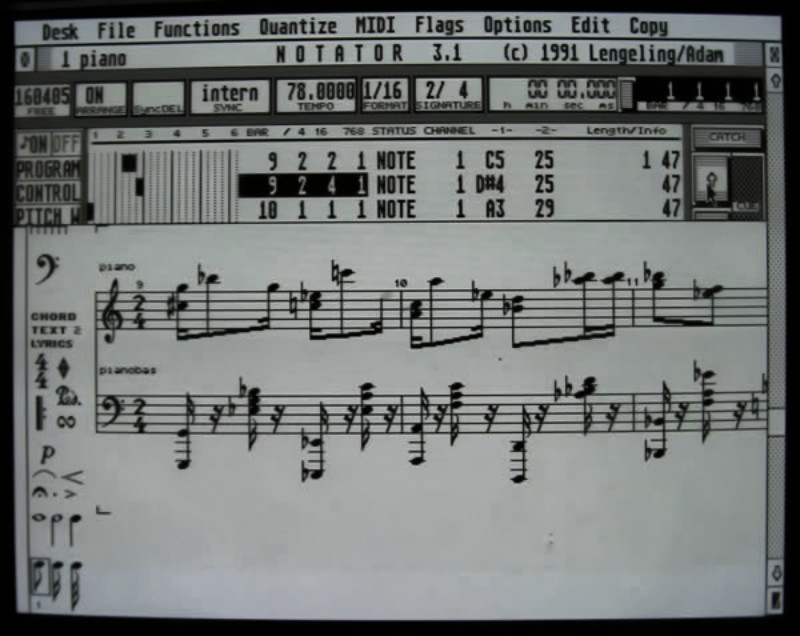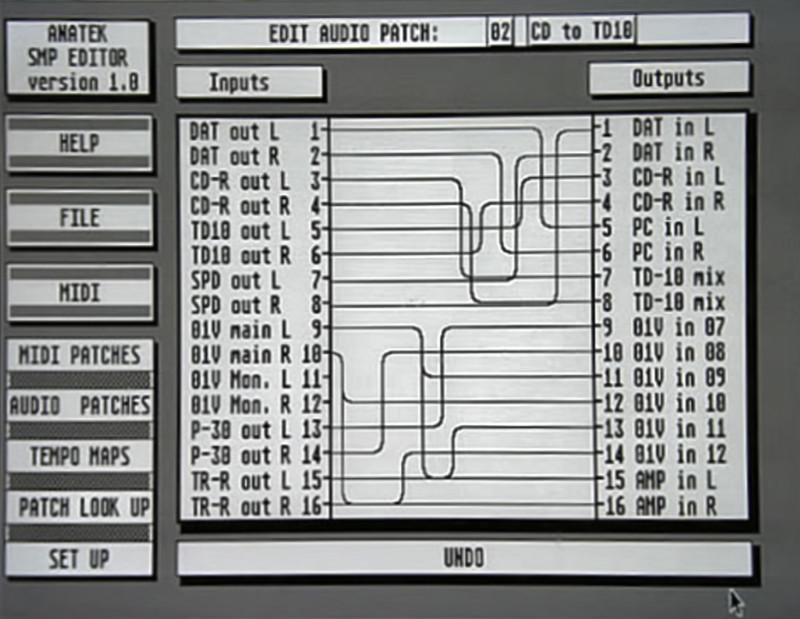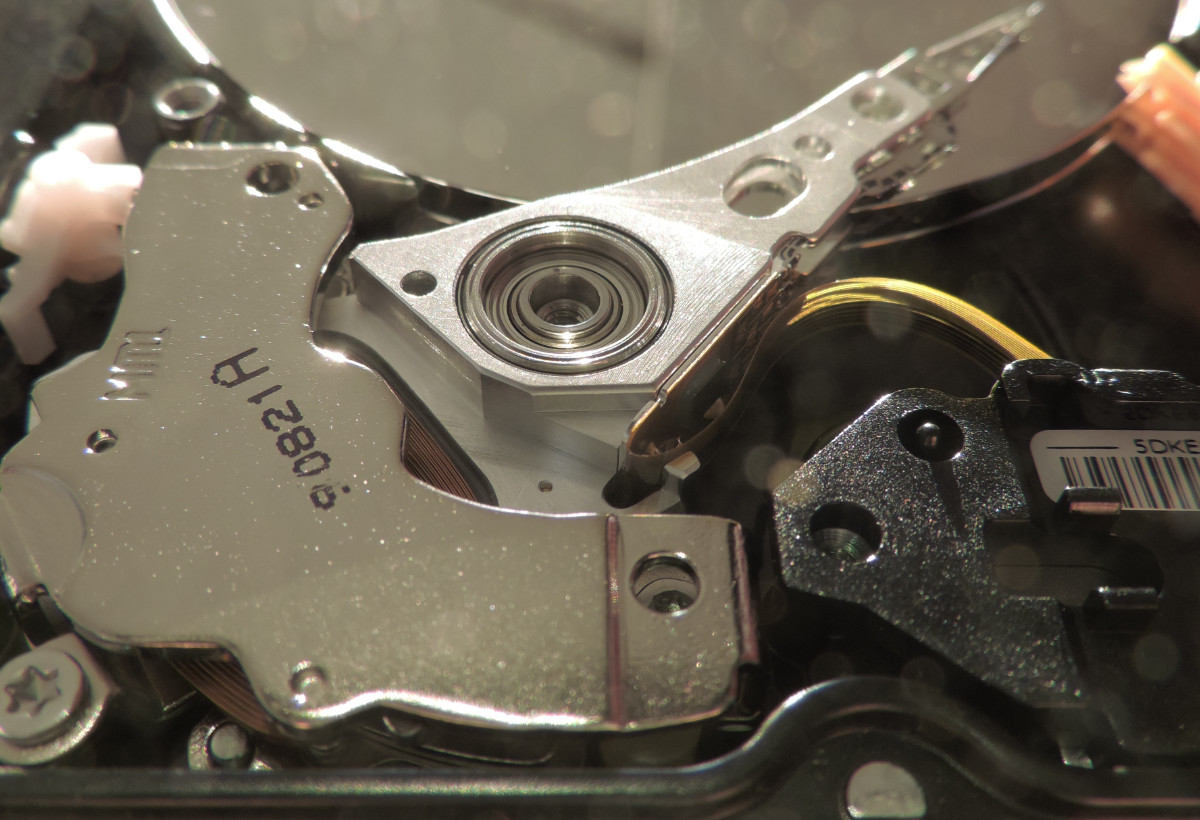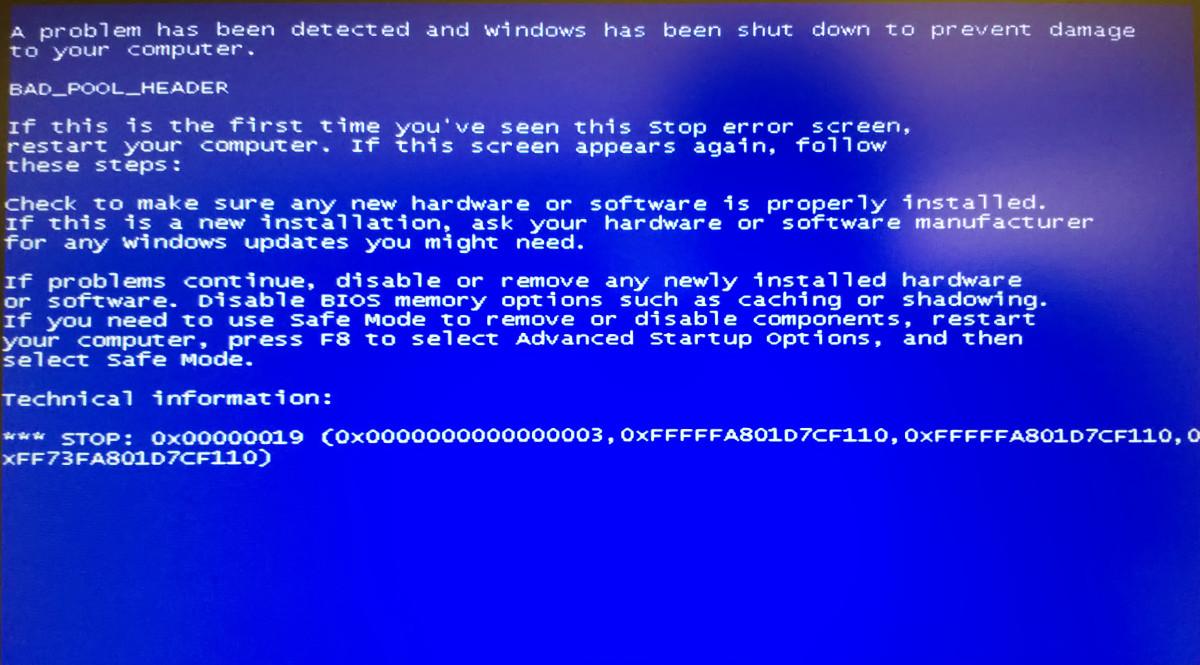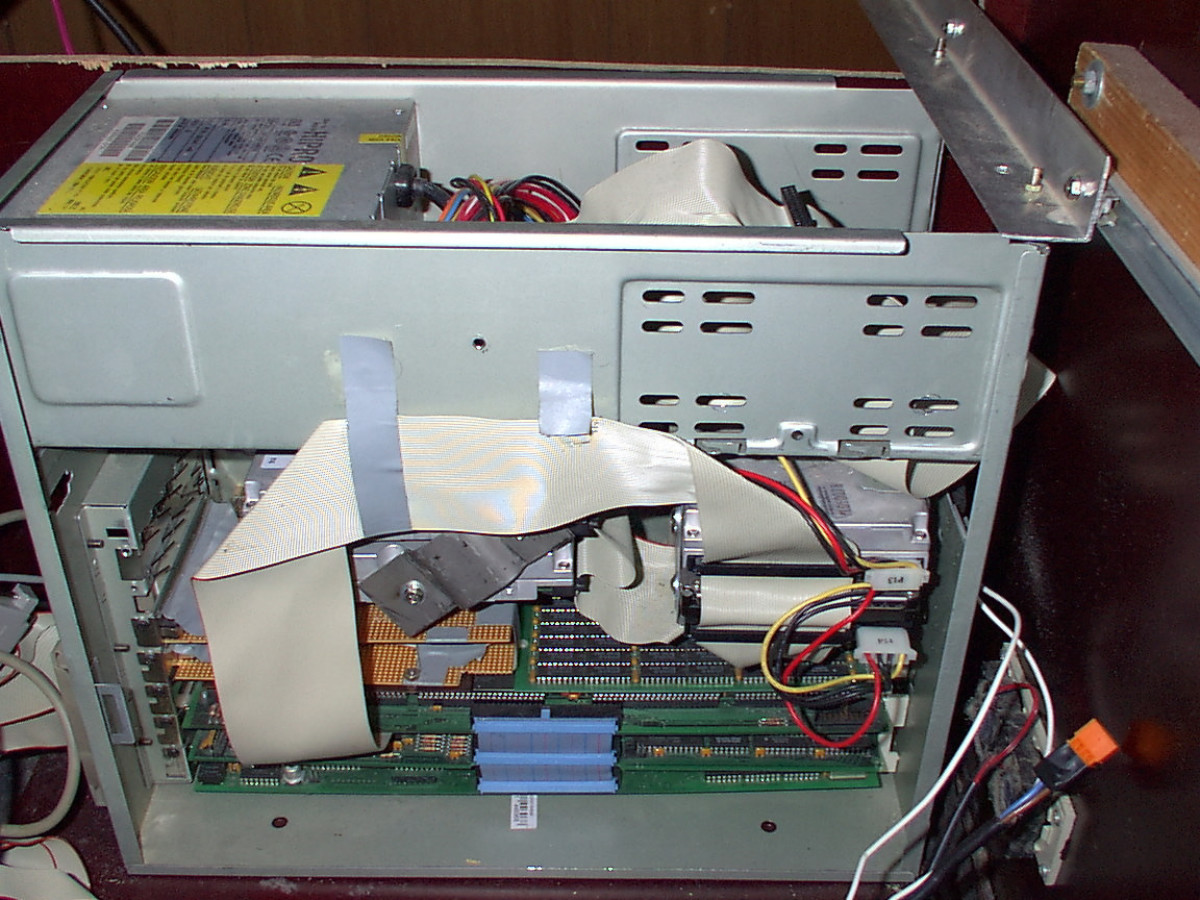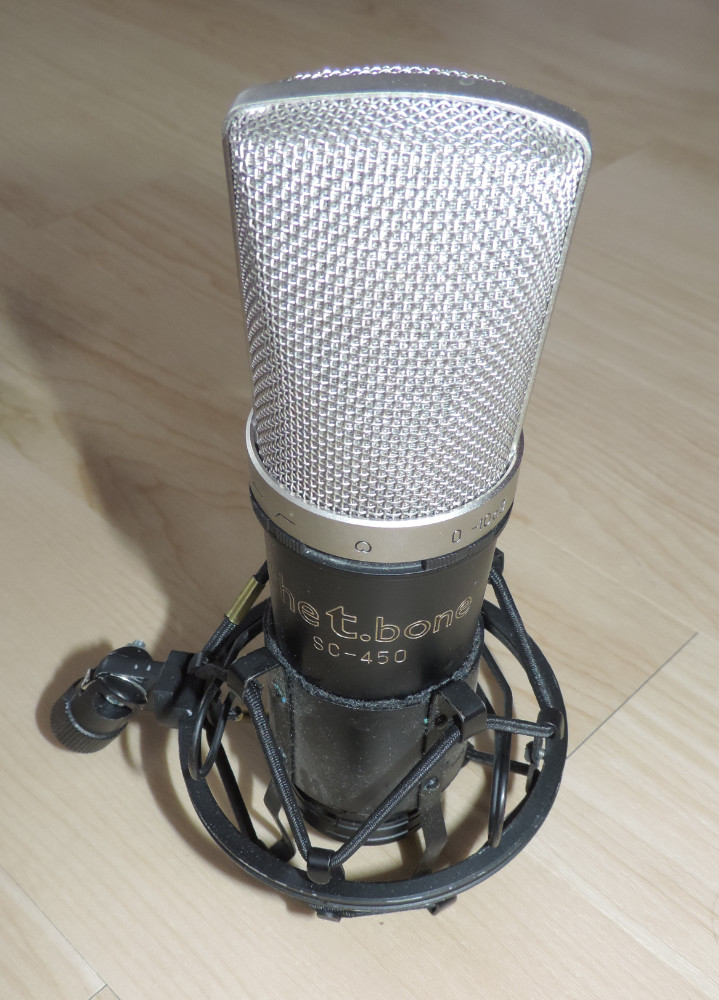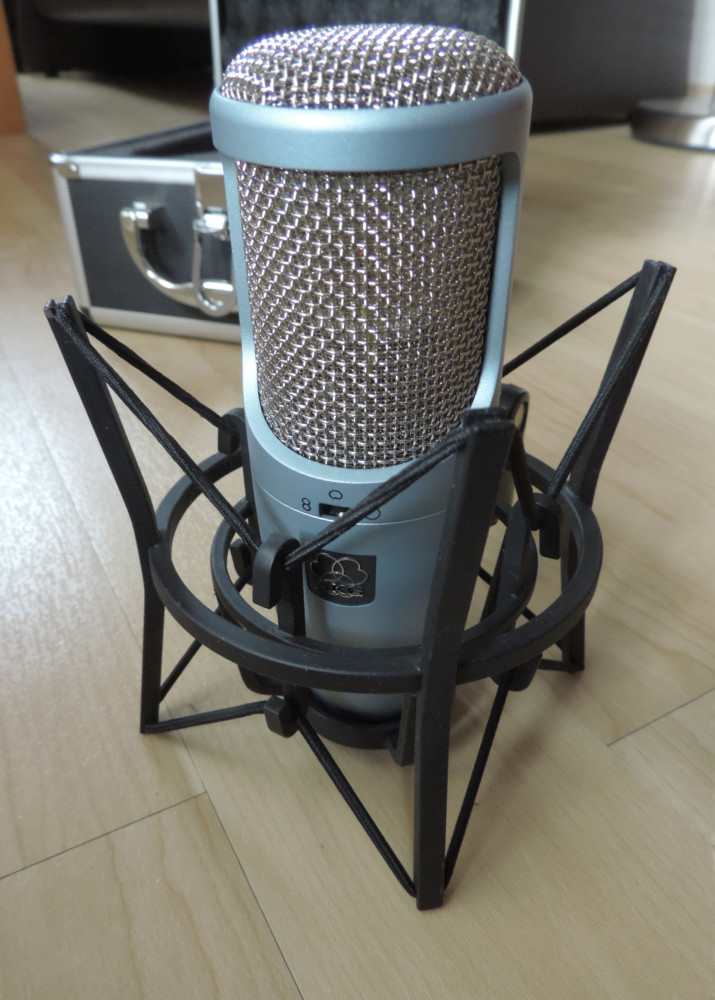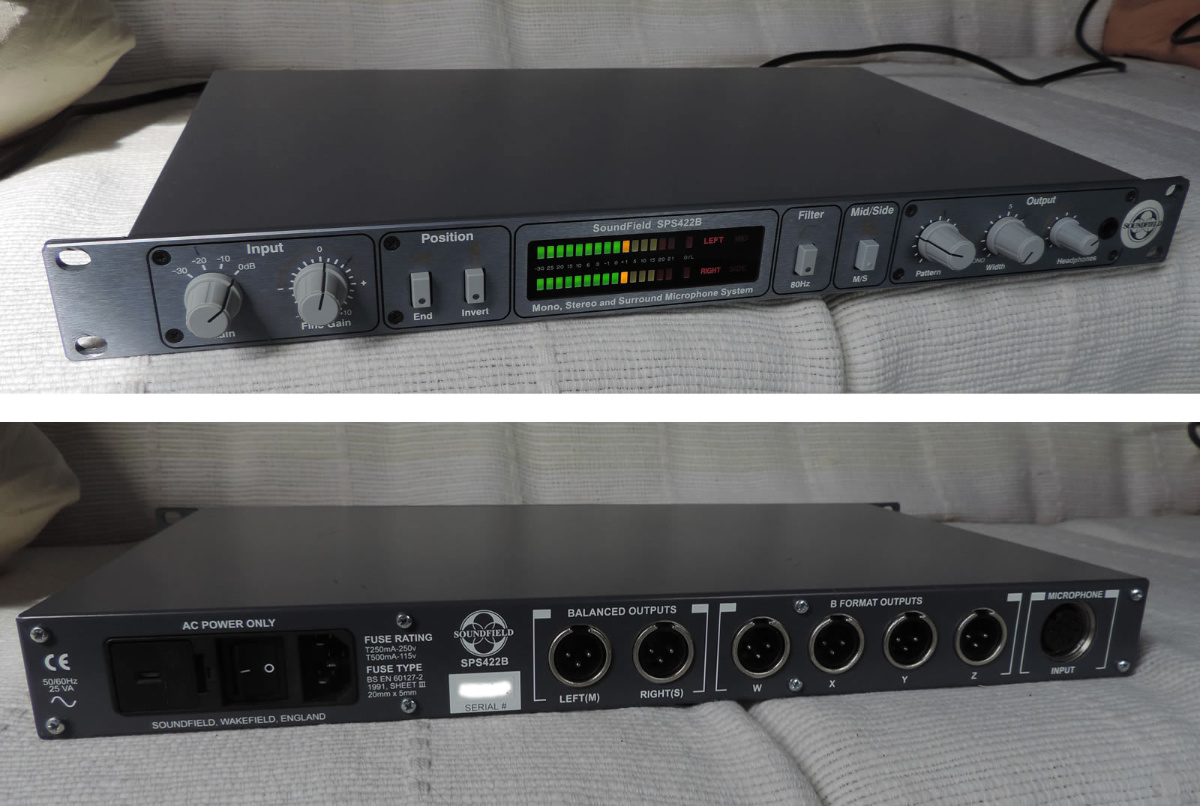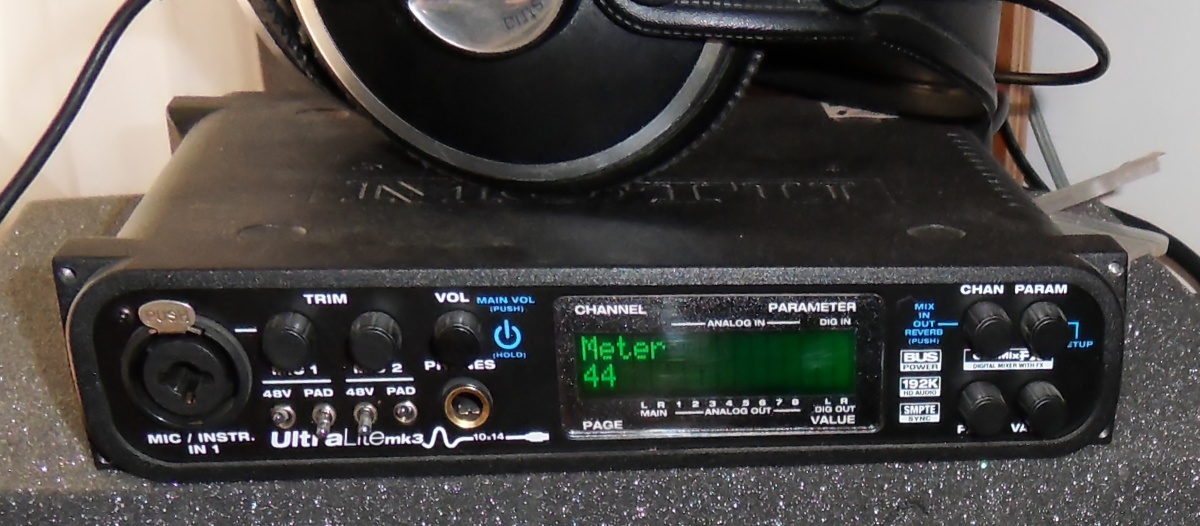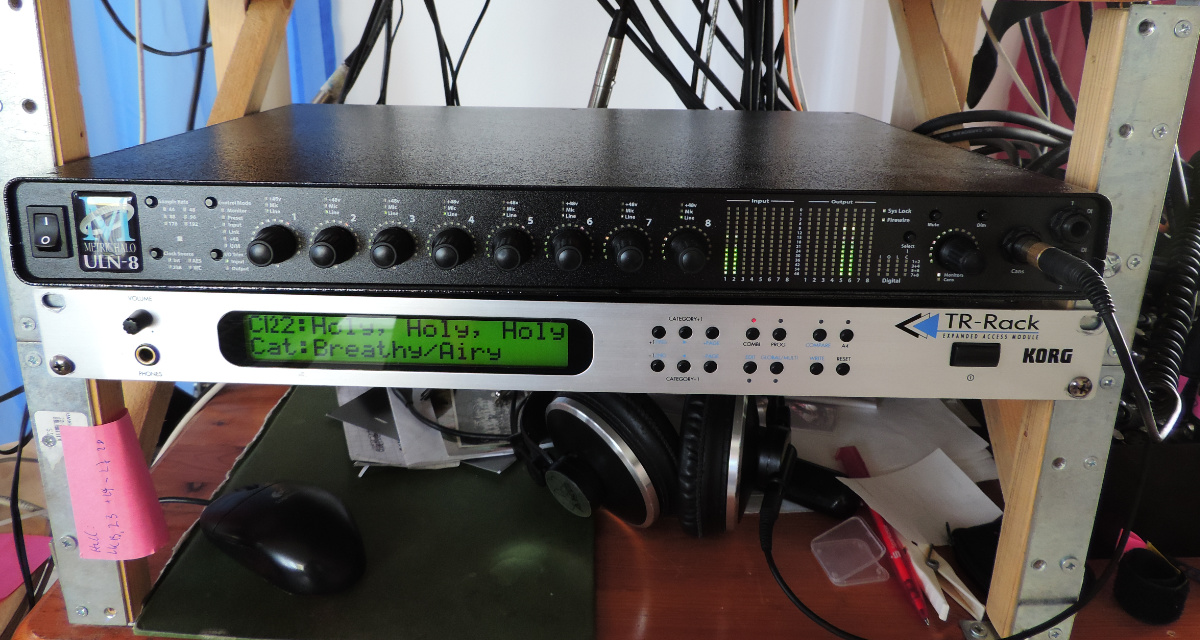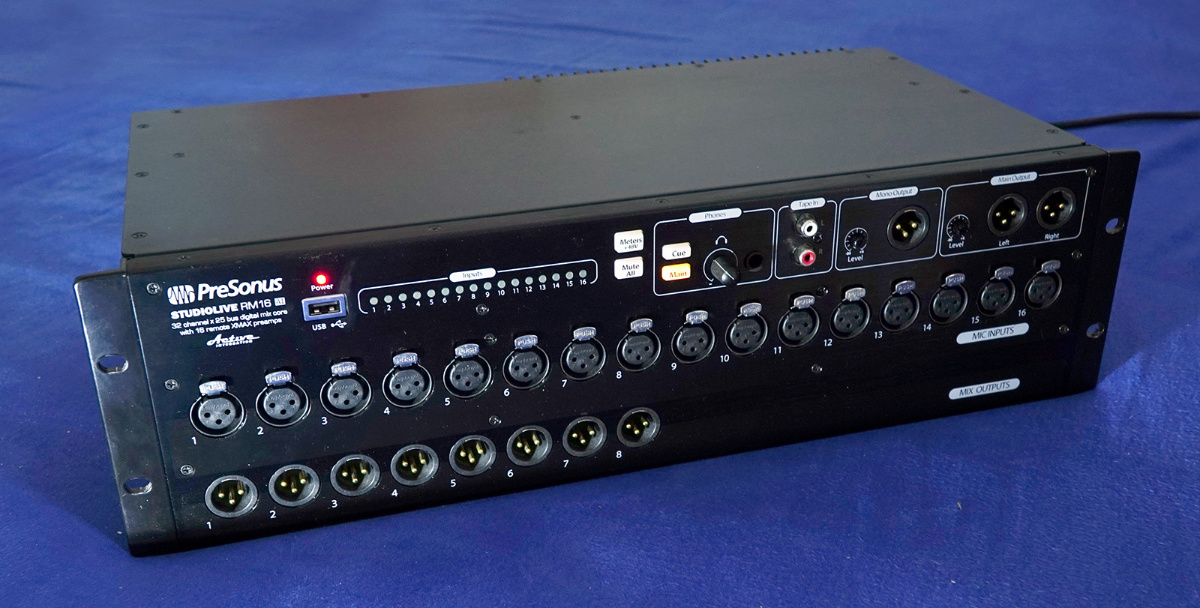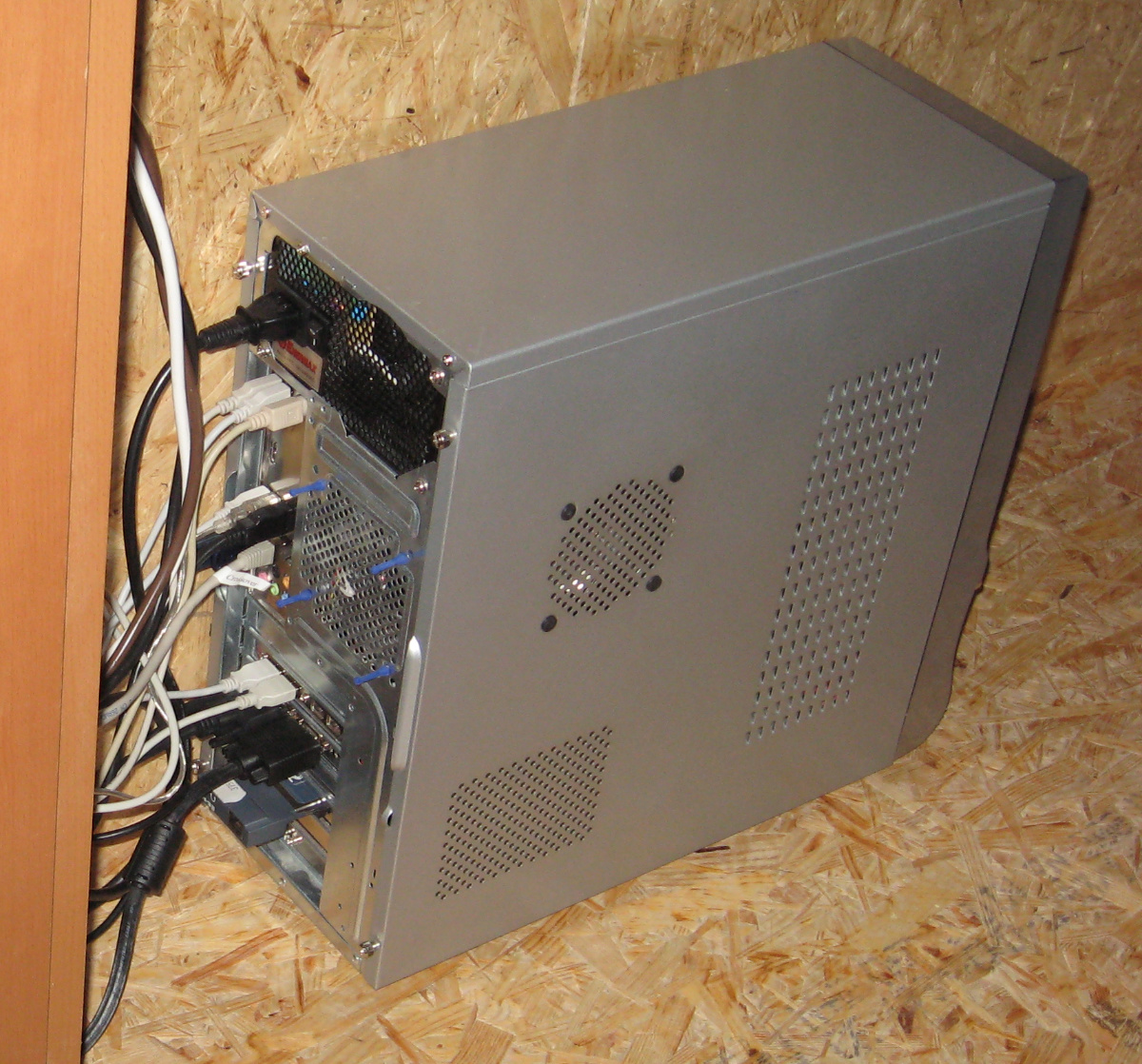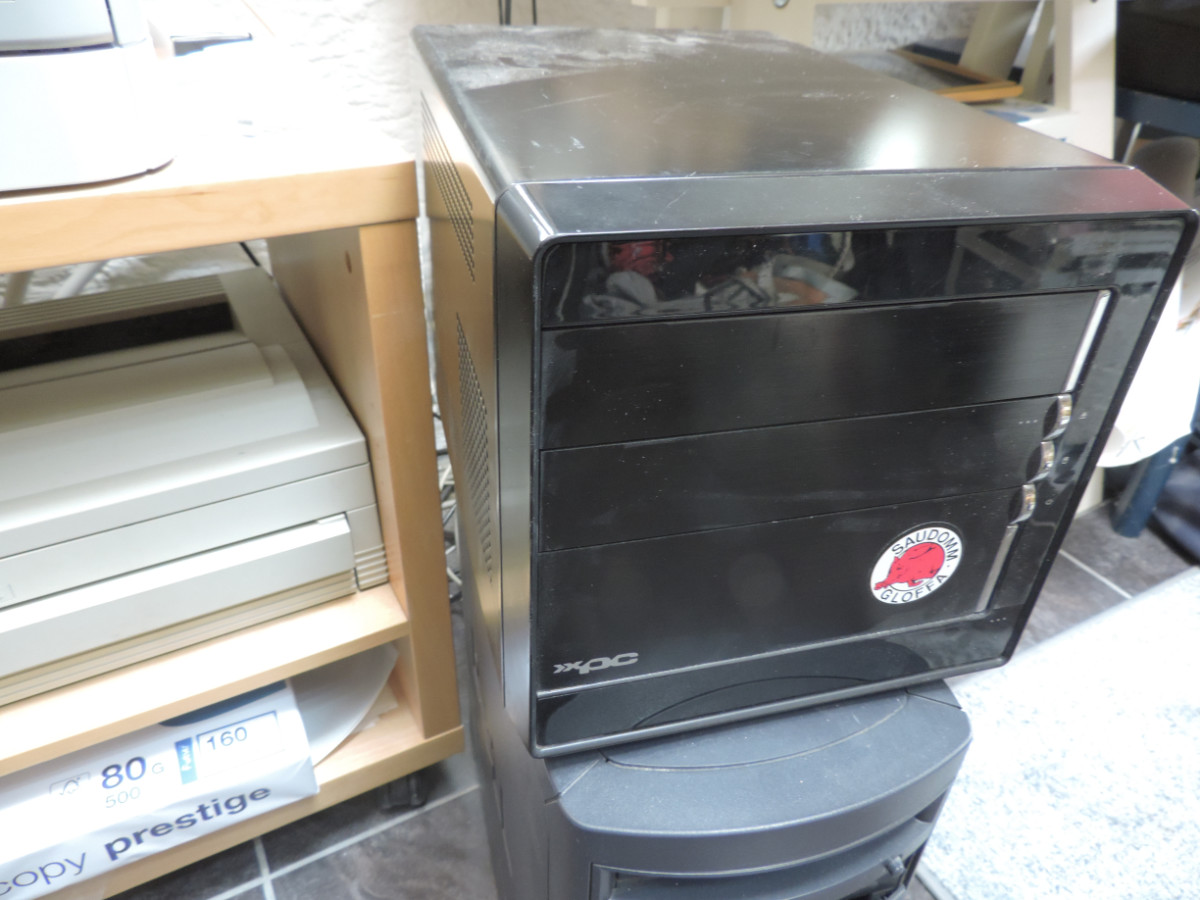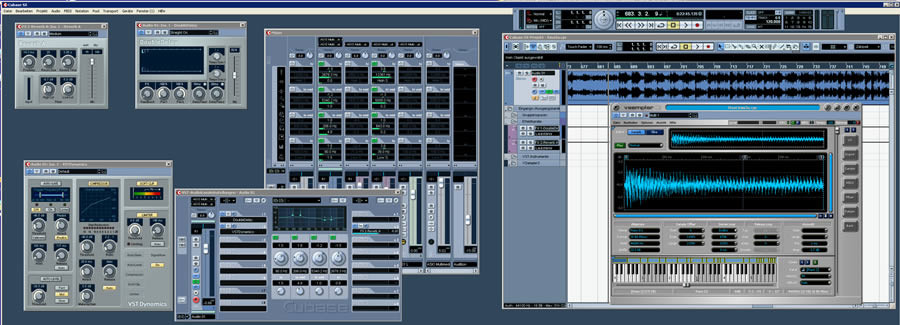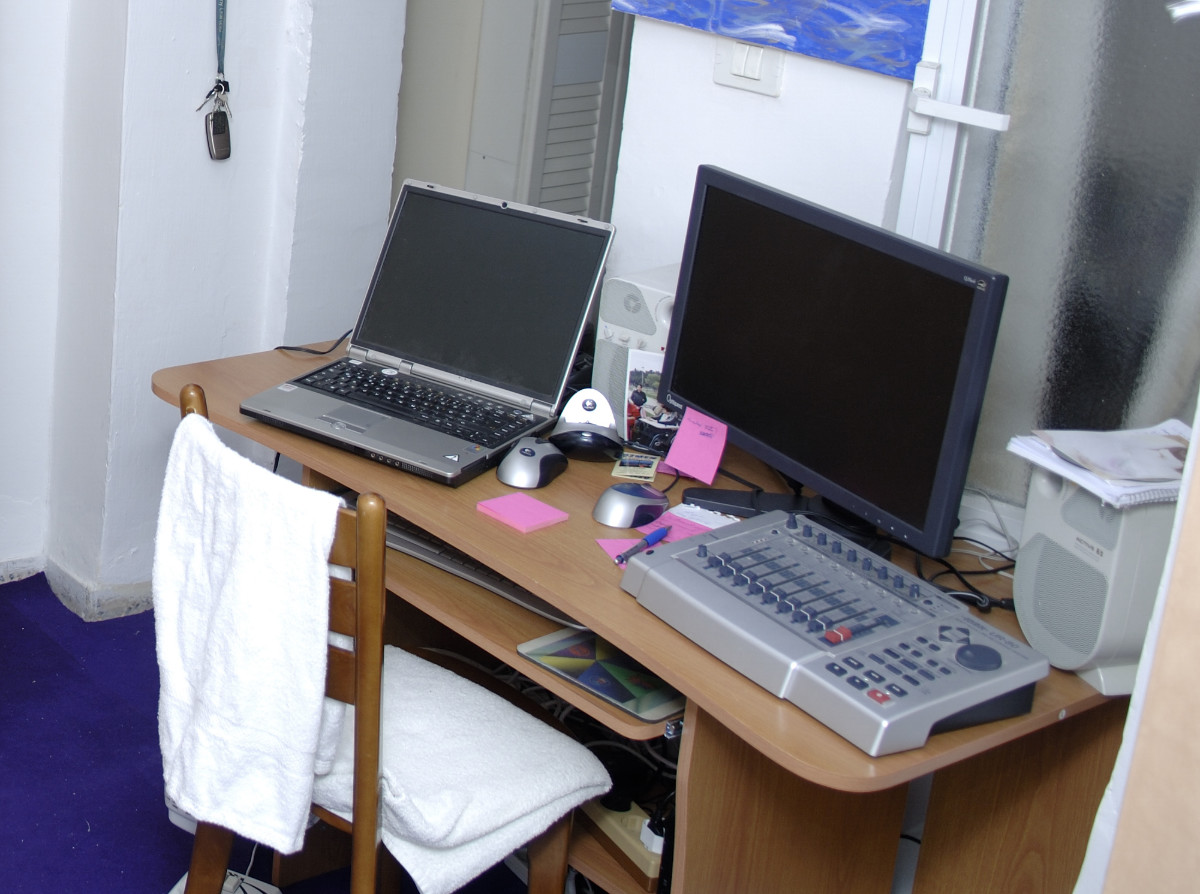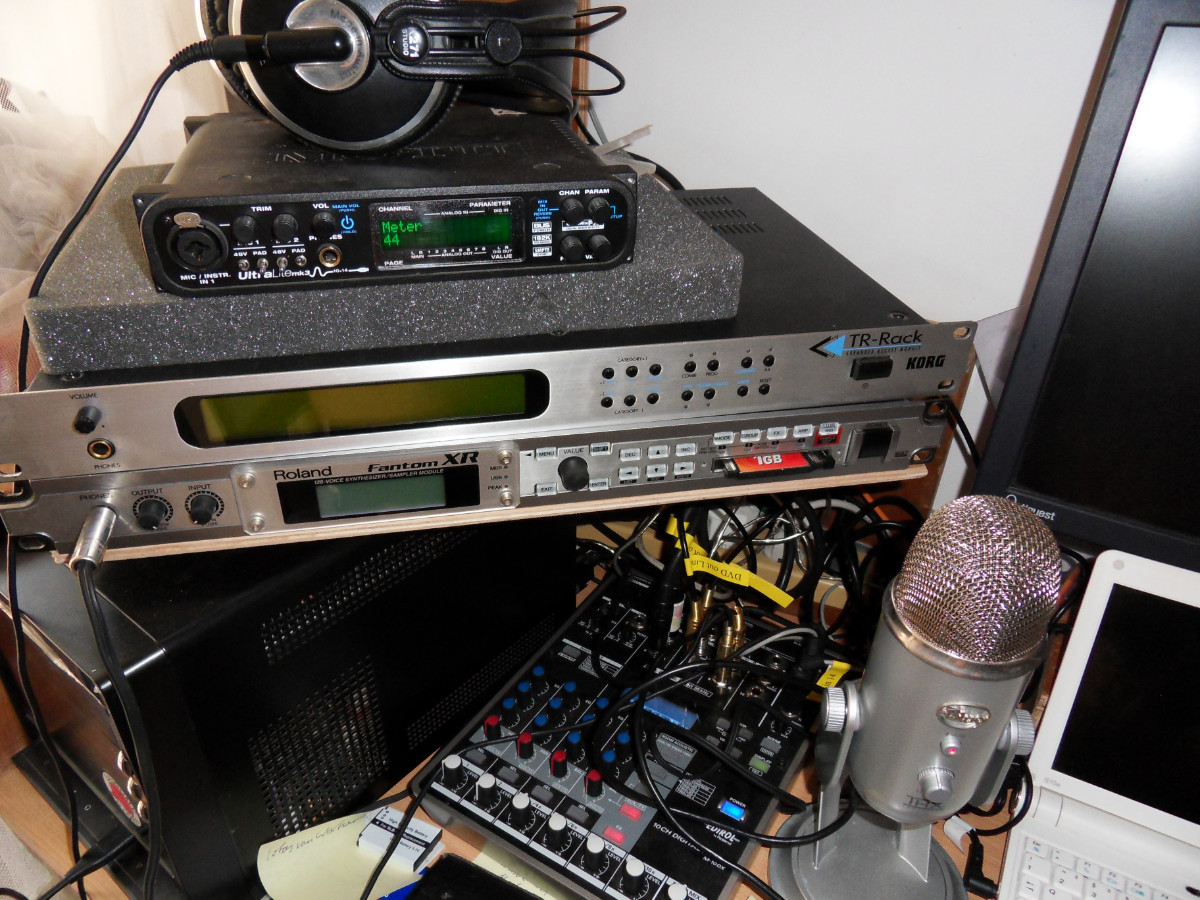INTRO:
First of all: There are no audiofiles in the Studio Album – this is NOT a mistake !!!
This page explains only how everything came to pass and the history thereof.
And yep, sorry, the journey is fairly loooong. Grab a cup of coffee or whatever you like before you read it…
It’s HIS Story!
How did it happen that I started with music recording/ Studio?
Especially since I have no education in all of that nor went to any sound engineering school or so – Why doing this?
To answer we need to go back to the time at the beginning of music with people together…
Yes, I wanted to play and in a band with different instruments you need something to balance.
Drums are simply the loudest instruments and so other instruments and the vocals need to be amplified
AND.
Who wants to do that?
Yes, nobody wanted to touch that stuff, so I was left who thought at least to give a try and turn here and there some knobs.
And also because it was in my home in the room we were playing/ rehearsing I could just play around with that stuff.
In other words: I simply dropped into the cold water and from there the sound work began.
Okay, guess I was also somehow interested in that kind of technical suff and a tiny bit gifted.
In this way it was not such a huge burden to me.
Throughout the years it increased and more and more I went into recording and studio suff – not so much into live mixing because I prefer to play live.
Review:
If I compare how expensive music equipment have been in the 70’s and 80’s, even the 90′
Puh, today studio is nothing
The quality and the possibilities today are so far above the analogue times (not talking about the music itself).
And also not talking about high end studios where the gear is still extreme expensive.
But for home- or a semi-professional studio; with a fraction of the money you get so much more.
And for most recordings it is simply enough.
Some people make productions that are not much worse as if it was done in a top end studio.
Of course it depends also on the one who(s) recording/ mixing.
Maybe only a few people might be able to hear the difference.
Especially when most people listening music on their smarty toys that are glued on their hands.
For what I spent back then, wow, just imagine that what I could get now.
However, the most expensive factor today is surely the room.
To have a acousticly well treated room of a decent size is definitely not cheap – And I don’t have that.
Well,
if there is anything I would miss today, then it is the Creator/Notator on Atari (except the small screen)
And of course the amazing Urei 809 monitors.
But the rest? Not so much, not really…
NOW:
I want to go on with the journey through all the (home) studio years with the different gears.
For that I will use a lot of pictures
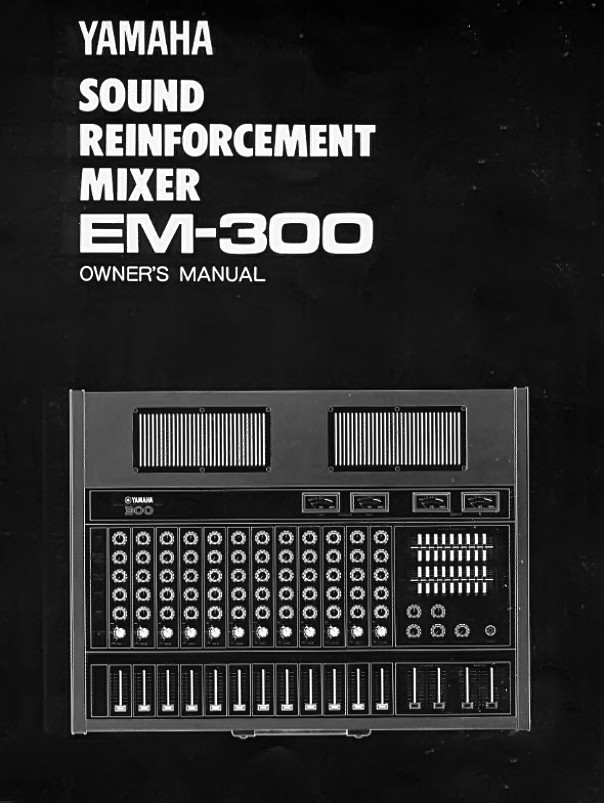 The very first Mixer I had my fingers on was the Yamaha EM-300
The very first Mixer I had my fingers on was the Yamaha EM-300
I do not have any original photo from that yet I found the cover of the manual.
Simple 12 channel Power Mixer that was there for the first band for several years.
Yep, that was the start into technology that ended up in Studio-stuff!
Analog gear (general):
One of the most expensive single item was surely the Tascam MSR 24 Track 1″ machine with Dolby S.
Though it was the low entry level in multitrack recording, still a lot of money. By that time you would have get a middle class car.
I also had a remote for that, which was very helpful to record myself
Though reel machines sound warm, but the maintenance/ servicing for those machines never exciting.
I have two pictures of that.
The one is in it’s rack and the other more a closeup.
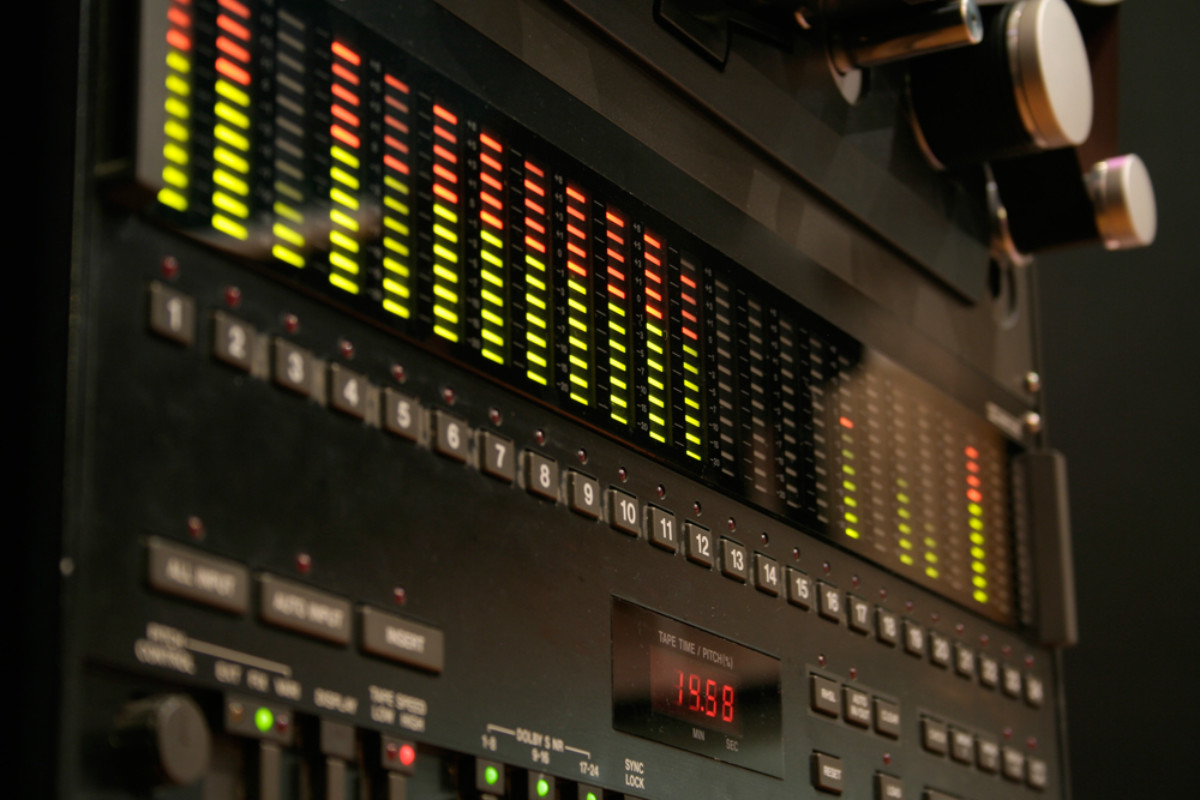
You will never forget the cable spaghetti of analog times
The rack in the front always looked fascinating – I had more racks, but only a picture of that one
But when you look from behind – oh oh… what a mess
For everything that to be connected together I had a patchbay where I could switch the routings.
When it is full, there is even more cable spaghetti to face.
Analog mixer
I already mentioned the first mixer I touched the Yamaha EM-300
That was for the first band.
But here I want to add now some mixer that I used for recording and studio:
As much as I remembered a Soundcraft mixer was the first that I used for recordings.
Very primitive, guess it was the one with the 4 tracks.
Once I leased a 8 track machine – but that was a mess, because this machine was completely worn out and possbily never serviced. So, only problems with that instead recordings.
The second was the Tascam M-2524, which was not so bad at all with 8 buses and parametric EQ’s on mid and low.
I sold it at the end to a friend and he still use it.
I got once a good offer to buy a good studio mixer, a Yamaha PM-3000. As far as I remember it had 48 channels
But by that time I did not had that money and soon after that the digital era began.
48 channels would been for me anyway too much of what I would need anyway, even with my extended home studio.
Analog environment:
Just have a look into the analog environment:
My studio was set up with some nice flowers behind… Yes I know the room was not treated perfectly from the acoustic.
But I think it was not too bad because it was failry good in size with a carpet-floor and a lot of wood around.
Analog, of curse were most instruments.
Some Moog synthesizer – I am still waiting til anyone will bring a modeled Memorymoog.
That was a great one which I had until as much other of the studio got some water damages
I do have a bunch of Analog modeled synths from Arturia as well the Minimoog that I also had as a real ancient one.
But the memorymoog was something special… let’s see if they one day will come up with one – I might get it.
Probably one of the best pieces in the studio were the Urei 809 monitors.
They had just an incredible clear sound and no wonder they were actually named time alignment monitors… so precise.
First steps from analog to digital
then towards the 90’s there was a big shift with studio technology from analog into digital.
It did not happen over night but it came.
Tape decks died, Vinyl died (and revived again, yet not to the same degree).
It did no pass by to me.
Though I am bit old school but I jumped slowly into the digital era.
Something that I would consider a bridge, was the Creator/Notator
A MIDI software, running on an Atari computer.
My opinion of that?
It is still the best MIDI software – sadly without an atari it won’t run.
Emulation never came up nor did any other developer write such a great Software.
How do I know?
I tested dozen of software but none can be compared to the simplicity of Notator up to this very day. It was just super efficient to work with.
The only disadvantage was the small 10″ screen and maybe the slow mouse behaviour.
But super stable, never had a single software crash – except once when the electricity failed.
I had it later on built into a rack with a Akai Sampler for the sounds above
From MIDI to Audio
The Atari I used also for the Anatek MIDI and Audio Patchbay for 16 MID and 16 Audio Channels (Inputs and outputs)
Though only 16 channels but a big relief to the patching by hand – and very reliable.
Then 1992 my first Harddisk recording System
No, it was not cheap – for that money you would get today possibly a 18 Core Computer with a good interface and one of the top DAW’s
However, I had the money and instead a car I bought this Computer with windows 3.1 and a Digital recording system from Spectral Synthesis.
And what?
I had it running probably 15 years without any issues.
Surely nothing compared to the feature stuffed modern DAW’s you can get
But, I never experienced a single crash of the software about 2MB of size (no, not 2GB but 2 Megabytes) throughout the whole time.
We know Windows crashed sometime on it’s own – but that’s another issue.
Actually, I synchronized all the pieces together via SMPTE, Atari and the 24 track machine.
However, I could do things with the Spectral HDD system that no DAW that I know of can do anymore – at least not the ones I know.
It was able to replay the music files seamlessly between -200% to + 200%
back and forth…
Also the editing was great. Writing with the pencil on wave files was even much better than on ProTools.
At the beginning I had 2 Hard drives with each 360MB for recording files (that was super big by that time) and a 200MB system drive
The system was basically a separate computer that was simply hooked up to the ISA slots of a windows computer.
Windows was only like a remote for the HDD system itself.
Later as the prices of the hard drives upgraded it to 4 drives with 2GB each.
Therefor I got a new bigger case to be able to fit them all in – also with Win95 it was running.
Today it would not run anymore since ISA slots are not available anymore
Hard drives by that time were much more sensitive as they are today.
Even though normal drives today are not completely shock resistant but compared to the early days with the modern day HDD’s you can almost play soccer.
I had a number of HDD failures due over the course of the years. Sometimes only a medium accidental hit on the PC case and… bye bye
Microphones:
Well, microphones were somewhere between analog and digital yet at the same time none of both – let’s say rather neutral
I just want to go into a few of the bigger condenser, starting from the cheapest to the most expensive
first get the t.bone SC-450 which is a Thomann house product
Well, not too bad in itself, yet the shock mount was very much a crap
Then I had a AKG perception 400
In the lower price range a pretty good choice, for a very universal use
A bit an outsider might be the Blue Yeti which is a stereo USB microphone
that was a really nice one and even the quality is fairly good
Only it is not useful when you want to record in combination with an audio interface
And without any doubt the best microphone by far was the Soundfield.
I had in the old studio a Soundfield MK 4 or 5 – sadly this got also water damage.
Years later I bought a Soundfield SPS422 with the small controller SPS422B.
By that time it was handled by a company named TLS.
Due to financial troubles I had to sell it.
If I would now want to get it again and had the money, even then it would be impossible.
After TLS it went to RODE but they kicked it off
Maybe it is too good – oh yes it was very expensive but I would considered it as one of the best microphones you can get.
It might be in the range with the top line of Brauner or Neumann for example.
It’s a microphone you either love or hate or both at the same time.
And it was useable for any recordings because it was just super neutral, honest and detailled.
I would love to still habe it but so it is…
The only equivalent that RODE had left from Soundfield is the NT-SF1 Ambisonic microphone which was also in the Soundfield program.
It is also a Tetrahedral microphone yet the capsules
of the NT-SF1 are much below the quality that the SPS422 had.
Specially for the Soundfield there was a plugin for the DAW called Surround Zone (I still have that).
With that you can record in A or B format (basically of the single capsules on a 4-channel track) and then adjust the levels.
In that way you can create a 360° “soundfield” – or change the pattern to any type you want.
Whether Stereo, or the other formats that you can see in the picture. (does show only B-Format,guess A-Format is also available) .
There are several plugins and possibly even a stock plugin for most DAW’s that could do it also, yet this is a nice visual plugin.
Currently for my vocal recordings I use a RODE NT1.
Surely far away from the quality of the Soundfield.
Though it is a microphone for small budgets it is pretty good.
And I am very happy with that because it simply match my voice.
It comes with a small pop shield which works fine.
No need for a separate one.
Audio Interfaces:
Audio Interfaces is a mess…
Which one to chose?
There are tons of variations available and it get’s more and more.
Guess one problem is: Once they get older and the manufacturer does not produce them anymore,
then, they do not continue to update the drivers.
Finally as it happened a few times,
A new OS version comes out (whether Windows or Apple – both the same junk).
And finally you realize, it won’t work anymore.
Or stuck with the old OS?
Then you cannot update other software anymore… ends up in a loop.
However, the first Audio Interface was an Edirol UR-80 (this company was taken by Roland).
It was basically a combination of interface and controller.
Yeah and I loved it. Though only 2 channels up to 96KHz,
the it simply worked super as a controller for the DAW.
Though it ended with the lack of driver support.
Another Interface I went through was a MOTU UltraLite mk3.
Quality was okay so far yet I had too much troubles with the drivers.
I had it for a couple of years but then got rid of it.
Another one was the Akai EIE pro
A cute box with a sweet design.
The quality was nothing spectacular but okay so far.
It had some good features and with the knobs on hand very useful.
Yet one day it smoked on it’s own – and that was the end of the Akai-story.
Then I jumped into a Focusrite Liquid Sapphire 56.
For lower budget a good choice by that time.
Also here troubles with the drivers as the product discontinued.
With my current OS version would not be compatible anymore.
Then I made a BIG BIG switch.
From Windows I jumped into Apple with an iMac.
And there I picked the high end interface Metric Halo ULN-8.
However, I was not pleased with that choice.
Not because that the Interface is was bad, no, not at all.
But having so much Windows software where I did run a dual boot system.
With Apple and Windows on a iMac?
I would never do it again and recommend anyone not to do it:
These two brands seem to not like each other.
Throughout a few years I had so much trouble with that.
Not only because the iMac died a few times within the first year (luckily all warranty).
But so many files ended up corrupt or missing.
Finally I decided to go back on Windows.
May people ask, why did you not turn over completely to Apple?
Since I already had some software that only runs on Windows where there is no replacement on Apple.
And if so, it would take me throusands of hours to transfer it if there would be no way to do it automatically.
So that was the end of the Apple journey and the Metric Halo Interface, since it only runs on Mac.
The Picture shows the MH-interface together with one of my most beautiful sound expander.
The Kord TR-Rack which was a rack module of their Trinity Keyboard yet with more sounds as the keyboard.
A bit a disadvantage was the polyphony of 16 voices.
Nevertheless, I should never sold it though with those limitations but the sounds were all just amazing.
After that, must have been in 2015 I bought a Presonus Studiolive RM-16 AI which is actually a Rack mixer at the same time.
I wold not use it as a live-mixer because the controller software is terrible.
And the settings are very clumsy.
The latency is actually great – the connection over Firewire after the years I realize was not the best choice as Firewire is basically dying.
I also do have a Presonus Studiolive AR Mixer which is a hybrid of analog mixer and an audio interface.
It runs with USB yet the latency is not as good as the RM mixer.
I love much more real mixer instead the reack stuff because they are so much more flexible.
Yet in times when I did not had much space it is not always the best choice.
Like now when I am in a tiny room, the Mixer is mounted on the wall (it works, just very unusual to see that).
Computers:
Two computer of the Spectral system I showed.
Computers usually very quickly they become dinosaurs.
So, you can’t avoid to get new ones every now and then.
I’ve tried to keep them running always a relative long time but still once something changed there is a need for an upgrade.
I will show only a few that I had
Sometimes I used laptops, sometimes dektops.
But four I want to mention (do not have pictures of other ones):
One was a Desktop with I guess an Asus mainboard.
That one did not run so well though according to the technical specs should have been better.
Then a Shuttle XPC, bought it in 2007 or 2008.
This was one of the best PC’s I’ve ever had
Due to the limitations because of the size I changed it one day.
I gave it to a friend who is also a musician and it runs still today.
For some years I had super powerful Laptop with Xeon 6-core and 32GB RAM
I think this was a lemon.
It died not as much as the max but it never did a good job.
For the technical specs it should have been much faster.
Also any installation of software or drivers turned to be a bit fragile.
I don’t know what was wrong on that machine but finally I gave up and sold it.
Since 2016 I have a i7 4-core (built to order with a ASRock Z97 extreme6 mainboard).
According to the specs it should be definitely much slower than the Xeon 6-core.
But I think the components are just working perfectly together.
It seem to be it is twice as fast as the
Xeon 6-core and I am still happy with it.
Only as Firewire is on the way to die – that’s the only thing that ever caused some small difficulties.
Sure if I would have the money I would consider to upgrade
But I don’t want to touch a running system.
I would prefer to still have it on Windows 7, but… so it is…
But a lot of the latest software (updates) don’t not run on Win7 anymore
For example: Melodyne 5, Cubase 10.5, Waves V12 plugins, Vegas 17…
Only sadly my older Photoshop version does not run on Win10 anymore
As there is no way to buy Photoshop anymore but only subscribe, I am off…
I use Affinity instead. Not a 100% replacement but almost as good – some features still missing.
Digital Audio Workstations (short: “DAW”)
Even still running the Spectral Synthesis Digital recording, at one point I dropped into the first DAW.
And this was Cubase.
Starting with the version VST 5.
From there over SX and throughout the years Cubase is still my main DAW.
I had also Sonar, during the time of Apple Logic but did not like them.
Reaper and Studio One I had also installed but since I hardly ever used them, they are deinstalled.
With reaper I could deal yet the MIDI features don’t fit my needs.
Studio One I had also (small version). Though some is better than in Cubase but the overall workflow is not my thing.
As Cubase had a time with very buggy versions (around Version 5) I jumped into ProTools.
Apparently the version 9 on ProTools was my last version because all the plugins I purchased were not compatible after the version 10 anymore.
And I was not willing to buy all the stuff again.
Yes, when Cubase kicked of the 32 bit plugins it was also not so nice,
But it was not such a big issue for me because the most I could update to 64 bit and… fine.
People posting “what is the best DAW”, but there is no best or worst.
Every DAW has it’s place and annoying things you will find in all of them.
Okay, ProTools still appears to remain the studio standard (though I don’t like the subscription stuff.
But… who cares, I make music on my own in my tiny tiny home studio.
I stick with Cubase because it’s workflow match the best for my style.
I might not have always the latest version but that is because of the silly Steinberg policy when they changed it years ago.I wished I could have avoid the surveillance system Windows 10.
But… as I was runnning into too many troubles with some updates of plugins and instruments…
eeeh, now running one of the most terrible OS that ever existed (besides Win ME and 8) = Win10.
Yes, it works and is fairly stable but the rest is just a nightmare.
I guess because they know XP was too good to develop a public 64 bit version. Win7 was also great, but BIG Brother surely would miss some important surveillance features.
Some say, Apple seem to be better.
But as I wrote in the other section, I had Mac, yet it died 3 times within the first year.
And Yes because of the other issues I just stick with silly Windows – but, so it is…
Maybe soon we will not need computers anymore when Yeshua return.
No need for that in heaven anyway.
Finally – at the end of the Studio-journey through different setup’s
Remember, all of them are home studios.
Though I have recorded some music for some friends, I never made any profit, nor charged a single cent from them.
This was my last studio I had back in Germany.
There I had plenty of space, like as I had with the analog studio.
The images show it in two different views.
Then I had a veeeery small setup with the Edirol Interfae in Israel.
With that I recorded the CD “My Magnificent Home” for a friend
So you see what is possible even with such limitations.
No room treatment, no real monitor speakers, just a laptop and cheap speakers.
I have two pictures from two different locations where I lived.
One of the Apple studio was also very compact, yet in Cyprus.
While the other one in Tala I had a fairly big apartment
Both rooms were not treated much on acoustic.
But as they were not mine and I did not stay for too long I did not want to do a lot of work on the building.
The studio with the Shuttle was also very compact – as the shuttle itself.
That was a setup with an very small analog mixer.
Not too bad all in all.
The mixer was a bit noisy but it did not affect the recording itself through the interface, only for monitoring.
The last picture shows the last version.
Actually it does not show the very last version because I moved the big piano to the side,
and also re-arranged the position of the monitor speakers.
But roughly it is still the same.
The computer is behind the wall/box to reduce a bit the fan noise.
(that’s why I don’t have any images from that)
No, it does not protect completely, just a little bit because it’s just a wooden board.

